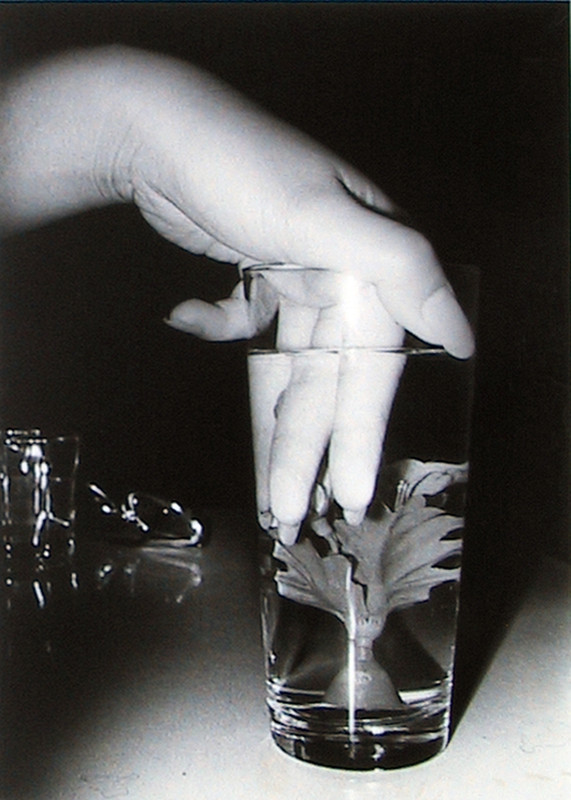Daido Moriyama
Vintage Prints
19 Jan - 23 Feb 2013
Galerie Bob van Orsouw take great pleasure in hosting a solo show of Japanese artist Daido Moriyama. In view of Moriyama’s 2012 retrospective at Tate Modern, the show presents vintage prints from the past four decades, some of which have never been shown in public.
Daido Moriyama is the most celebrated photographer to emerge from Japan’s late 1960s Provoke movement, and one of the country‘s top contemporary photographers. In the 1960s and 1970s, his highly textured, dramatically contrasted images took Japan‘s photography scene by storm. At age 73, his work continues to record the dynamics of city life. His portraits, still lifes and cityscapes are darkly lyrical and testify to his obsession with uncanny realms of experience.
With series such as Japan - A Photo Theater, Farewell Photography and Hunter, as well as contributions to the legendary photo journal Provoke, Moriyama advanced in the 1970s to the status of one of the most important Japanese photographers. Moriyama’s grainy pictures eschew technical sophistication; they are full of harsh contrasts and deliberately. Yet they transform stylistic elements derived from popular media – tabloids, advertisements, television – into a subtle, sophisticated aesthetic influenced by the photography of William Klein and Andy Warhol, and the novels of James Baldwin and Jack Kerouac.
Moriyama’s contribution to Provoke captured the attention of his younger colleague Nobuyoshi Araki, whose work has featured at Galerie Bob van Orsouw for the past 15 years. Araki was fascinated by the magazine:
„I was jealous of Provoke, especially Moriyama’s nudes in the second issue. Most people paid no attention to Provoke, but really it was like a bomb in Japanese photography“. To Moriyama as to Araki, Tokyo is a favorite „hunting ground“. The city‘s intricate labyrinth represents an unrelenting challenge to the camera‘s eye. The near-impenetrable neighborhoods of Shinjuku or Asakusa, their dark corners and magical locations with graduations from light to dark, are among Moriyama’s favourite haunts.
The show includes some of Moriyama’s rare landscapes. On his journeys the photographer occasionally wanted „to get in touch with nature, to see the original geographical features of Japan and the origins of the Japanese soul.“
As a counterpart to the „chaotic everyday existence“ in Japanese cities, Moriyama has captured the sea, windy skies and expansive bays. Moriyama has forged an expressionist style that is wholly his own:
„Most of my photos I take from a moving car, or while running, without the finder, and in those instances one might say that I’m taking the pictures more with my body than with my eyes. I think that the process gives my photos more of a sense of place and existence, more atmosphere.“
Daido Moriyama is the most celebrated photographer to emerge from Japan’s late 1960s Provoke movement, and one of the country‘s top contemporary photographers. In the 1960s and 1970s, his highly textured, dramatically contrasted images took Japan‘s photography scene by storm. At age 73, his work continues to record the dynamics of city life. His portraits, still lifes and cityscapes are darkly lyrical and testify to his obsession with uncanny realms of experience.
With series such as Japan - A Photo Theater, Farewell Photography and Hunter, as well as contributions to the legendary photo journal Provoke, Moriyama advanced in the 1970s to the status of one of the most important Japanese photographers. Moriyama’s grainy pictures eschew technical sophistication; they are full of harsh contrasts and deliberately. Yet they transform stylistic elements derived from popular media – tabloids, advertisements, television – into a subtle, sophisticated aesthetic influenced by the photography of William Klein and Andy Warhol, and the novels of James Baldwin and Jack Kerouac.
Moriyama’s contribution to Provoke captured the attention of his younger colleague Nobuyoshi Araki, whose work has featured at Galerie Bob van Orsouw for the past 15 years. Araki was fascinated by the magazine:
„I was jealous of Provoke, especially Moriyama’s nudes in the second issue. Most people paid no attention to Provoke, but really it was like a bomb in Japanese photography“. To Moriyama as to Araki, Tokyo is a favorite „hunting ground“. The city‘s intricate labyrinth represents an unrelenting challenge to the camera‘s eye. The near-impenetrable neighborhoods of Shinjuku or Asakusa, their dark corners and magical locations with graduations from light to dark, are among Moriyama’s favourite haunts.
The show includes some of Moriyama’s rare landscapes. On his journeys the photographer occasionally wanted „to get in touch with nature, to see the original geographical features of Japan and the origins of the Japanese soul.“
As a counterpart to the „chaotic everyday existence“ in Japanese cities, Moriyama has captured the sea, windy skies and expansive bays. Moriyama has forged an expressionist style that is wholly his own:
„Most of my photos I take from a moving car, or while running, without the finder, and in those instances one might say that I’m taking the pictures more with my body than with my eyes. I think that the process gives my photos more of a sense of place and existence, more atmosphere.“

